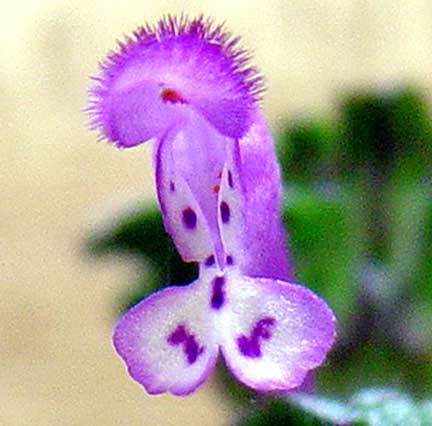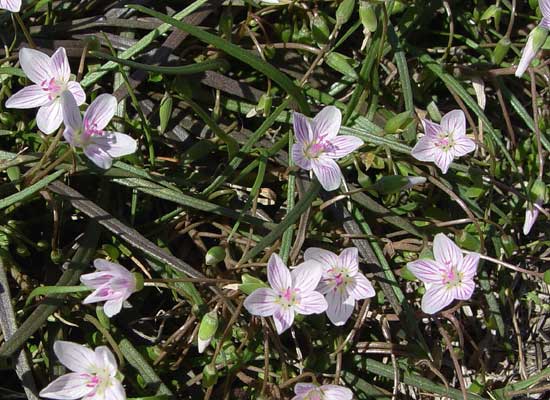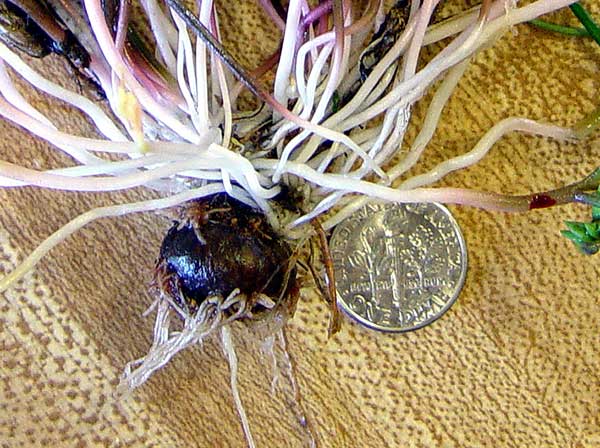RiskVA
Spring Beneath Our Feet 5 Mar 2014
Spring doesn’t officially begin until Thursday, March 20th, but its signs are all around us in East Texas. Pear, tulip magnolias, flowering quince, and wild plums are flowering, and maple buds are swelling. We usually notice these spectacular spring clues but we may not be as aware of the very small wildflowers blooming under our feet.
Tiny henbit and spring beauty are two of the most noticeable wildflowers blooming in my lawn. Henbit, a square-stemmed member of the mint family, is a purple-flowered plant about 3 to 5 inches tall, with blooms that look like miniature snapdragons with small, rounded deep green leaves in pairs that clasp the plant stem at their base. If you closely examine a henbit bloom, you’ll see a tiny Schnauzer staring back at you. Its friendly dog-like face is complete with a fuzzy topnotch, eyes, eyebrows, nose and jowls. You’ll have to get down on your knees to see them because the flowers are only a half-inch long and an eighth of an inch across. A magnifying glass will give you an impressive close-up view. Henbit is an early source of nectar for bees and on sunny days they flock to it.
Henbit leaves can be used in salads or boiled briefly and served like spinach with butter and seasoning. Since ancient times, this small plant has been used to treat arthritis, to induce sweating, and as a stimulant. Like so many herbal remedies, its uses are very broad and include employment as a laxative and a substance to expel intestinal parasites.
Spring Beauty is covering our yard now with a fragrant white and pale lavender blanket that bees are finding irresistible. Growing barely above the ground and spreading widely, spring beautys produce small five-petaled flowers a little over a quarter of an inch across, with pale purple or pinkish veins. These pretty spring wildflowers are a tender and sweet delicacy for our growing deer herd, and a plant that’s edible for humans, too. Try some in a salad, flowers and all. Spring beauty sprouts from small brown tubers about the size of the end of your little finger, and a couple of inches down in the ground. They taste a little like potatoes and can be eaten raw, boiled, or sautéed. Medical uses of the dried, powdered tuber have included convulsion control in children, and as a contraceptive. One reference mentions it as a “permanent” contraceptive. But I know a number of people who have eaten the tubers and were still plenty fertile!
Spring in the Piney Woods is a wonderful time of awakening and freshening. It’s a time for all things, including us, to take on new life. It is a time of rejuvenating – meaning literally to regain lost youth – and I am definitely ready for that! Perhaps we ought to substitute New Year’s Resolutions with a Spring Jubilee, recognizing our potential once again and the many opportunities we have to right wrongs, take a fresh lease on life, shuck off past disappointments and frustrations, recover from the winter doldrums, and move forward with renewed enthusiasm, faith and hope. For me it is an energizing season and hopefully for you as well.
Dr. Risk is a professor emeritus in the College of Forestry and Agriculture at Stephen F. Austin State University in Nacogdoches, Texas. Content © Paul H. Risk, Ph.D. All rights reserved, except where otherwise noted. Click paulrisk2@gmail.com to send questions, comments, or request permission for use.



